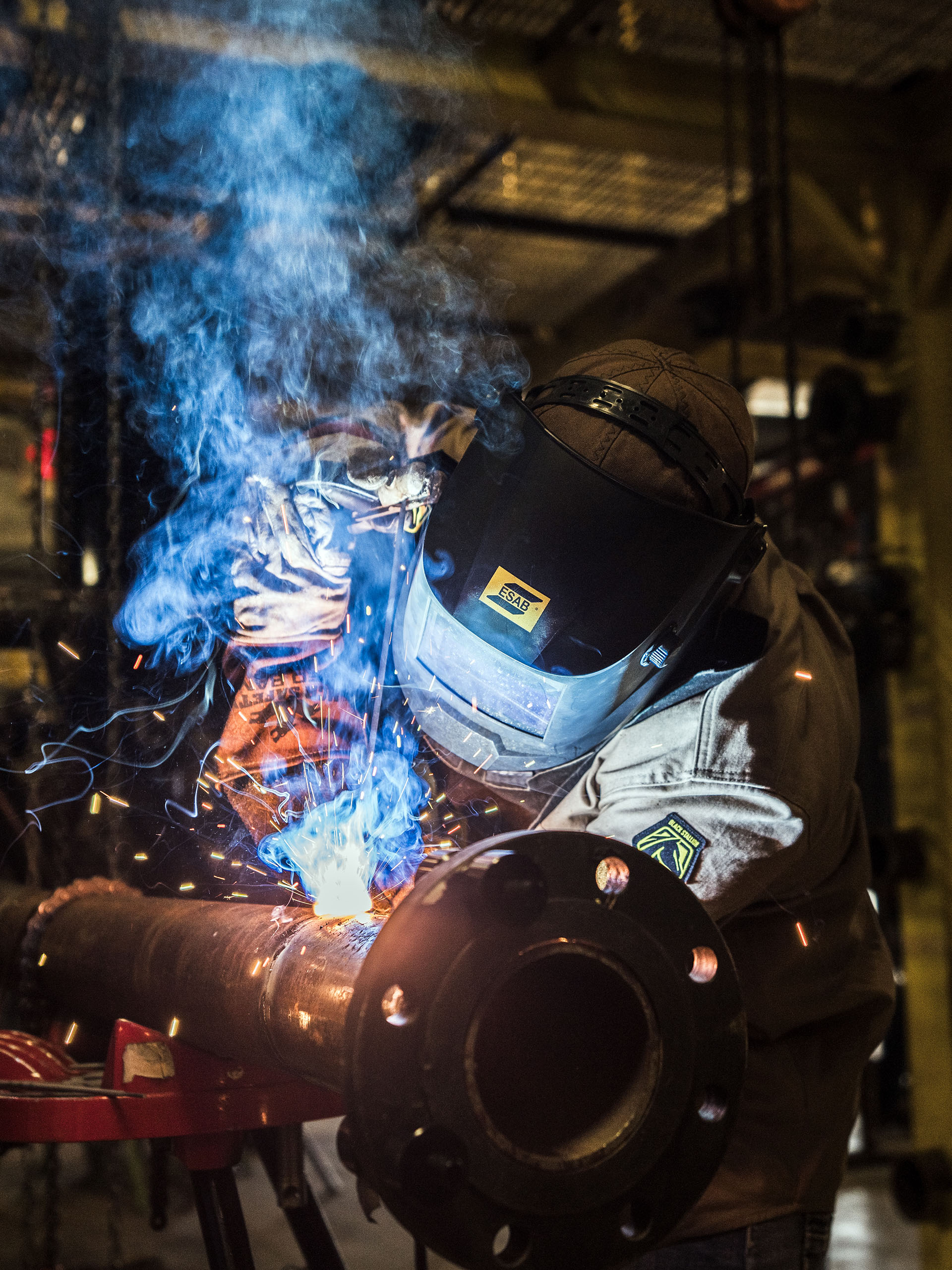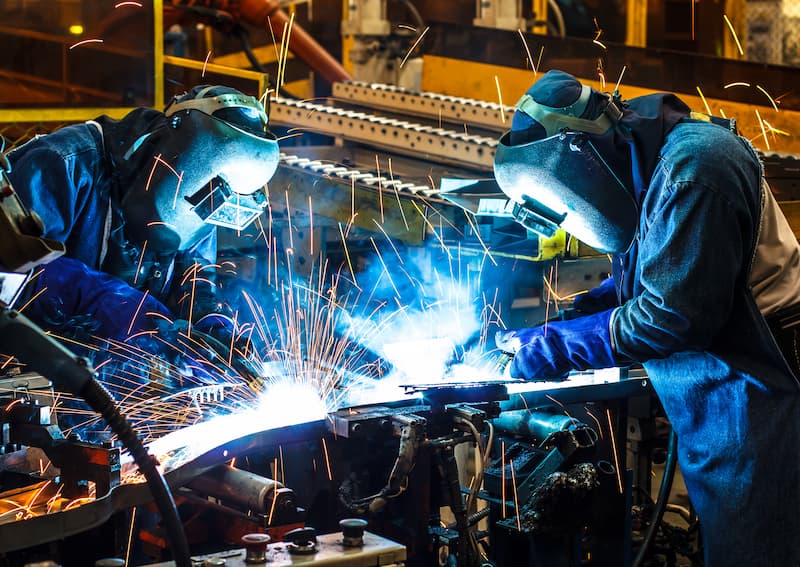Typical Welding Repair Work Issues and Just How to Address Them Efficiently
Welding repair services commonly come across an array of problems that can threaten the stability of the end product. Usual issues include insufficient penetration, porosity, and misalignment, amongst others. Each problem provides one-of-a-kind difficulties that call for particular approaches for resolution. Understanding these problems is crucial for welders intending to enhance their abilities and end results. This discussion will explore these typical welding repair work problems and reliable approaches to resolve them.
Inadequate Infiltration
Inadequate penetration happens when the weld metal falls short to totally fuse with the base material, causing weak joints and possible architectural failings. This issue usually comes from insufficient warm input, incorrect electrode angle, or inappropriate welding speed. Welders may encounter inadequate infiltration due to a mistake of the necessary criteria for a certain product density or type. Furthermore, contamination on the base material's surface area can impede efficient bonding, intensifying the trouble. To address poor penetration, welders must guarantee ideal settings on their tools and maintain a tidy work surface area. Regular examination of welds is advised to identify any kind of deficiencies early, enabling timely modifications and the prevention of compromised structural integrity in welded assemblies.
Porosity
Porosity is a common problem in bonded joints that manifests as little gas bubbles entraped within the weld steel. This flaw can compromise the honesty of the weld, causing reduced strength and prospective failing under tension. Welding. Porosity normally develops from contamination, wetness, or incorrect welding strategies, which allow gases to escape right into the molten weld pool. To attend to porosity, welders need to assure appropriate surface area prep work, keep a clean workplace, and use suitable welding specifications. In addition, selecting the right filler product and protecting gas can alleviate gas entrapment. Regular inspection and testing of welds can assist recognize porosity early, ensuring prompt corrective activities are taken, thereby maintaining the quality and dependability of the welded framework
Imbalance
Imbalance in welding can emerge from different variables, consisting of incorrect arrangement and thermal growth. Recognizing the source is important for effective resolution. Several improvement methods are available to straighten elements and guarantee structural stability.
Root causes of Misalignment
Welding misalignment often comes from a variety of underlying concerns that can endanger architectural integrity. One key reason is incorrect fit-up of parts prior to welding, which can bring about voids and unequal surface areas. Variants in thermal growth during the welding process can additionally result in distortion, especially if the materials being joined have different coefficients of growth. Furthermore, inadequate securing and fixturing may stop working to hold components firmly in position, resulting in motion throughout welding. Inadequately maintained equipment, including welding equipments and tools, might introduce inconsistencies in the weld grain, more adding to misalignment. Ultimately, driver error, originating from inadequate training or experience, can likewise play a substantial function in developing misaligned welds.
Adjustment Strategies Offered
Resolving imbalance properly requires a mix of restorative methods customized to the certain problems handy. One common method is using fixtures or jigs to hold parts in the appropriate setting throughout welding, guaranteeing regular alignment. In addition, pre-heating the materials can help in reducing distortion and boost fit-up. For considerable misalignment, mechanical adjustment methods, such as using hydraulic jacks or clamps, can be utilized to deal with the setting before welding. Post-weld warmth therapy may likewise be necessary to ease stress and anxieties triggered by misalignment. Mindful evaluation and modification throughout the configuration stage can protect against misalignment issues from becoming substantial troubles, advertising a smoother welding process and boosting overall structural honesty.
Distortion
Distortion is an usual obstacle in welding that can arise from different elements, including irregular heating and cooling. Recognizing the reasons for distortion is crucial for executing effective avoidance methods. Addressing this concern not just enhances architectural honesty however also enhances the overall high quality of the weld.
Reasons for Distortion
When based on the intense warmth of welding, materials typically undertake changes that can bring about distortion. This sensation largely arises from thermal expansion and tightening throughout the welding process. As the weld area warms up, the material increases; upon cooling, it contracts, which can create internal stresses. On top of that, unequal home heating across a work surface can exacerbate these anxieties, leading to bending or flexing. The sort of product likewise plays a substantial role; metals with varying thermal conductivity and coefficients of development may respond differently, leading to unforeseeable distortions. Bad joint design and poor fixturing can add to misalignment during welding, boosting the probability of distortion. Recognizing these causes is important for effective welding repair work and prevention methods.
Prevention Techniques
Effective avoidance techniques for distortion throughout welding concentrate on regulating warm input and guaranteeing appropriate joint layout. Keeping a constant warm input assists to minimize thermal development and contraction, which can cause distortion. Making use of techniques such as pre-heating the work surface can likewise minimize the temperature level gradient, advertising uniform home heating. Additionally, picking ideal joint layouts, such as T-joints or lap joints, can improve stability and minimize anxiety concentrations. Carrying out correct fixturing to secure the workpieces in position better help in preserving positioning during the welding process. Finally, staggered welding series can disperse warm a lot more evenly, preventing local distortion. By click to read using these methods, welders can significantly lower the likelihood of distortion and enhance the total high quality of their welds.
Breaking
Splitting is an usual problem come across in welding repairs, frequently arising from different elements such as improper cooling rates, material choice, or inadequate joint preparation. The event of cracks can significantly jeopardize the integrity of the weld, leading to prospective failures during operation. To resolve this concern, welders must initially assess the origin causes, ensuring that products are suitable and suitably chosen for the certain application. Furthermore, regulating the air conditioning price throughout the welding process is essential; rapid cooling can induce stress and anxiety and result in breaking. Correct joint design and prep work also contribute to minimizing the risk. Applying these techniques can boost weld high quality and durability, eventually decreasing the possibility of breaking in finished weldments.

Insufficient Combination
A substantial issue in welding fixings is incomplete fusion, which takes place when the weld steel does not effectively bond with the base material or previous weld passes - Montana Mobile Welding and Repair Belgrade Fabrication. This defect can bring about weak points in the joint, possibly endangering the stability of the welded structure. Aspects adding to incomplete fusion include not enough warm input, inappropriate welding strategy, and contamination of the surface areas being joined. To resolve this problem efficiently, welders must assure proper pre-weld cleansing and surface area preparation, along with readjust their welding specifications to achieve ample penetration and fusion. Routine inspection throughout the welding process can also aid identify insufficient fusion early, allowing for prompt corrective steps to improve the overall quality of the weld
Overheating
While welding repairs can enhance architectural integrity, overheating provides a substantial difficulty that can bring about material destruction. Extreme warmth during welding can alter the mechanical residential or commercial this page properties of metals, leading to lowered strength, raised brittleness, and bending. This phenomenon is particularly crucial in high-stress applications where architectural dependability is critical. Recognizing overheating can involve aesthetic evaluations for discoloration or distortion, in addition to monitoring temperature during the welding procedure. To mitigate the threats connected with getting too hot, welders ought to use appropriate strategies, such as controlling warm input, adjusting traveling speed, and making use of suitable filler products. In addition, executing pre- and post-weld warmth therapies can aid restore material buildings and improve the general quality of the repair service, guaranteeing long-term efficiency and safety.
Regularly Asked Inquiries
What Are the Common Indications of a Welding Defect?

How Can I Examine My Welds for Top quality?
To check welds for high quality, one can use aesthetic examinations, ultrasonic testing, and radiographic approaches. Each method guarantees architectural stability, identifies problems, and confirms adherence to specified criteria, ultimately enhancing the dependability of the bonded joints.
What Safety Precautions Should I Take While Welding?
When welding, one should prioritize safety and security by using appropriate personal safety equipment, making sure proper air flow, securing flammable materials away, maintaining a tidy work space, and recognizing surroundings to stop mishaps and injuries.
Can I Fix a Weld Without Redoing the Entire Joint?
Repairing a weld without remodeling the whole joint is feasible, relying on the damage (Montana Mobile Welding and Repair). Techniques such as grinding, including filler product, or utilizing a welding procedure can efficiently address details flaws while preserving the bordering framework
What Devices Are Necessary for Reliable Welding Fixes?
Essential devices for efficient welding repairs include a welding equipment, cord brush, mill, protective gear, clamps, and filler products. Each tool plays an essential role in making certain top quality and security throughout the repair process. Porosity generally arises from contamination, dampness, or inappropriate welding methods, which enable gases to run away right into the liquified weld swimming pool. Poorly maintained tools, consisting of welding makers and tools, may present inconsistencies in the weld bead, additional contributing to misalignment. When subjected to the extreme warmth of welding, products typically go through changes that can lead browse this site to distortion. Splitting is an usual problem experienced in welding fixings, usually resulting from different factors such as improper air conditioning prices, product selection, or insufficient joint prep work. A substantial issue in welding fixings is insufficient combination, which occurs when the weld steel does not properly bond with the base material or previous weld passes.
Comments on “Understanding cracking in welds and how Montana Mobile Welding and Repair Belgrade Welding solves it”